How can I protect or reduce my chances of catching this disease or spreading it to others?
As the world experiences the second wave of this insidious virus that manages to outwit any efforts to clamp it down, many of us yearn to travel and connect with family and friends, especially as the holidays are before us. Is it safe to travel? How can I protect or reduce my chances of catching this disease or spreading it to others? While there are some precautions you can take to reduce (not eliminate) catching this infection, there are no guarantees. But if you must …here is some advice on what to do.
- As the pandemic continues to spike in cities and countries across the planet; you need to consider whether you want to be in a place where the hospitals are overwhelmed, and you may not receive quality care, especially if you have underlining conditions. Best to wait until the peak of the disease is no longer an issue.
- Bear in mind that many states and countries are banning travel or requiring a 14-day quarantine. It is essential that you check your destination’s official travel website before you book a trip.
Traveling in the US, check https://www.cdc.gov/publichealthgateway/healthdirectories/healthdepartments.html
Traveling internationally, check the destination’s Office of Foreign Affairs or Ministry of Health or
https://travel.state.gov/content/travel/en/international-travel/International-Travel-Country-Information-Pages.html
for details about entry requirements and restrictions for arriving travelers, such as mandatory testing or quarantine. - US and International airports are now offering COVID tests at a cost of $ 70 – $250 that can be charged to your insurance. However, some tests such as the PCR test can take up to 3 days, so you will need to call the airport information center to determine what is possible and what your destination requires. Taking the test would allow passengers to bypass the mandatory 14-day quarantine in some states and countries. Bear in mind that a negative test does not completely rule out not being exposed to COVID. It takes about five days to develop measurable levels of the virus referred to as the incubation period.
- The next thing to consider is whether to drive to your destination instead of flying. Anytime you can reduce the sharing of spaces with others, that is most preferable.
- If you plan to fly, beware that airlines are no longer eliminating the middle seat except for Delta, which will end the practice in March, and Southwest Airlines in January 2020. The best way to get around this is to consider flying at off-peak times, very early in the morning or late at night, where the flights are likely to be less full.
- Another option is to check online the seating chart of your flight, and if it is too full, possibly request a change. Airlines are still honoring changing flights without charging a fee, although it is hard to say how long this will last and if there are restrictions.
- So, you decided to fly, and are about to head to the airport, how should you prepare? Three essential items to carry on your way out are multilayer masks, preferably with a face shield for your eyes, antibacterial wipes, and hand sanitizers.
- Always keep in mind that airports are subjected to a greater sharing of the virus simply by the sheer numbers of travelers, especially during peaks of the virus.
- Once at the gate, let others board the plane first, avoid crowding too close to passengers in getting to your seat, and once there, take out those wipes and without hesitation wipe everything down … the seat, tray table, monitor, armrest, and the seat buckle. Choose the middle or window seat to limit the number of passengers passing by you. It’s important to note that most airlines (not all) have state-of-art high-efficiency particulate air filtration systems (HEPA) that reduce your chances of catching the virus, assuming you are taking other precautions.
- Once on the flight, minimize using the restroom and eating unless it not an option. Also, limit conversations with passengers. Remember that social distancing on a flight is difficult to do; it increases your risk especially when sitting for hours on a plane.
- During and after the flight avoid touching your face, do not take your mask off, and remember to use sanitizer when touching new surfaces, and always practice social distancing when attending outdoor events.
- If you are planning on staying at a hotel or Airbnb, call and find out what their cleaning and mask protocols are and what amenities, if any, are canceled due to COVID so that you can plan accordingly. No need to bring your bathing suit if the pool is closed. On car rentals and Ubers, you also want to make sure that they are following the same cleaning and mask protocols, carrying wipes and hand sanitizers is a must.
The most important advice is not to let your guard down and to follow the CDC protocols to reduce your chances of getting the virus. We are happy to share an 8×10 checklist that you can download for planning any trip.
“For more stories and photos like these, please click here to subscribe!“
FREE GUIDE FOR HOW TO PROPERLY TRAVEL DURING THE PANDEMIC
Download the free guide and prepare yourself to travel safely during the pandemic!






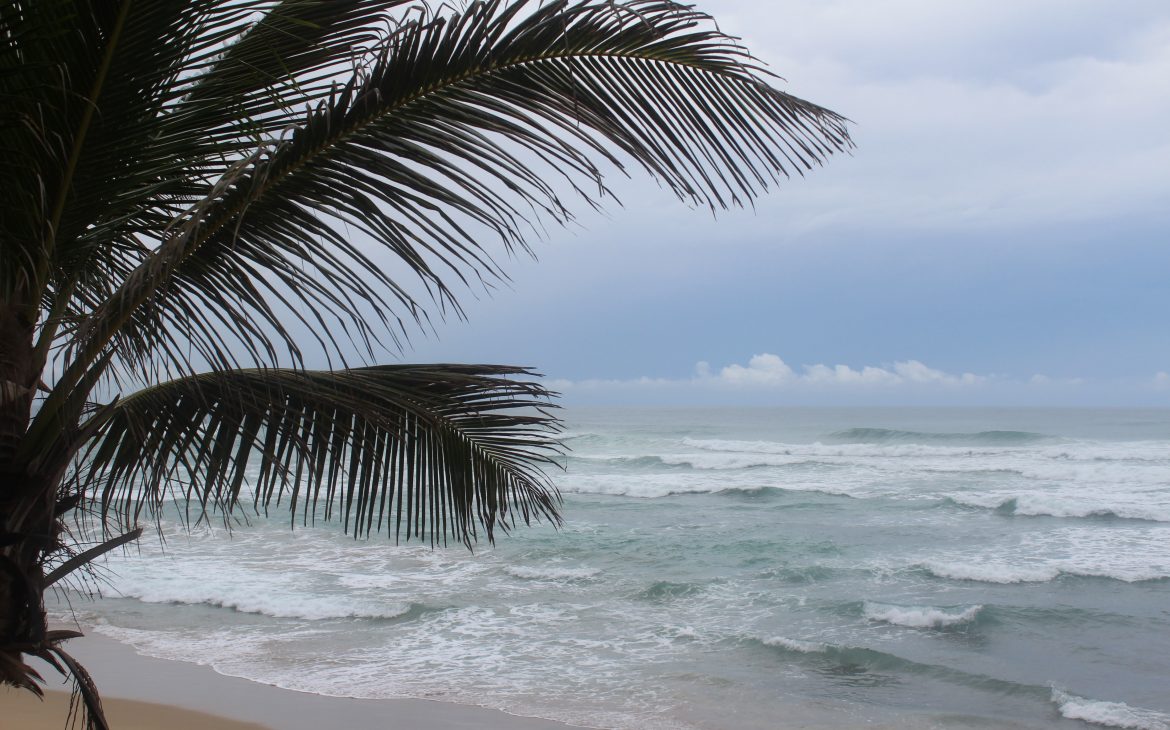
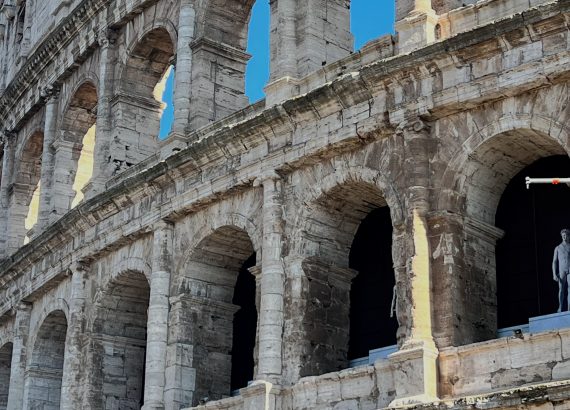



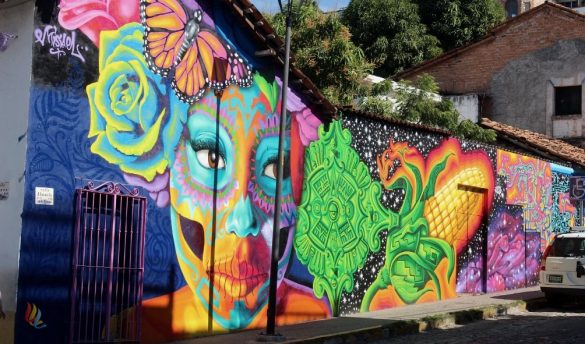
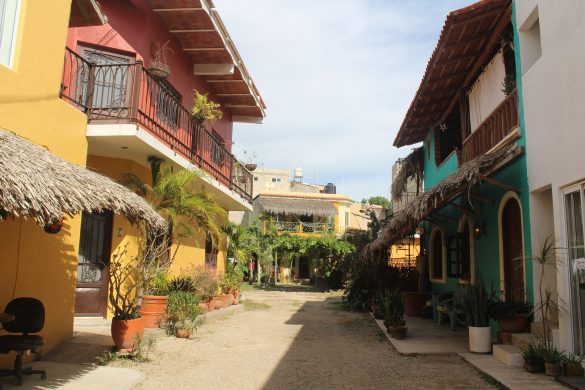
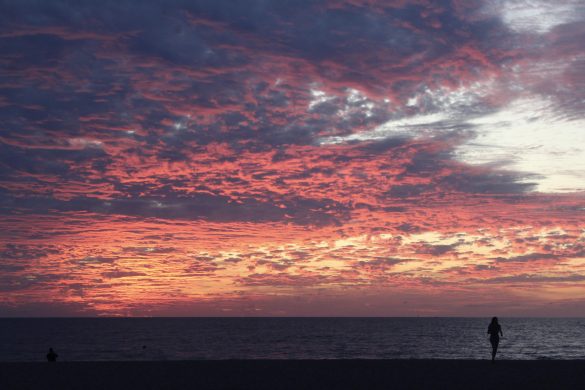
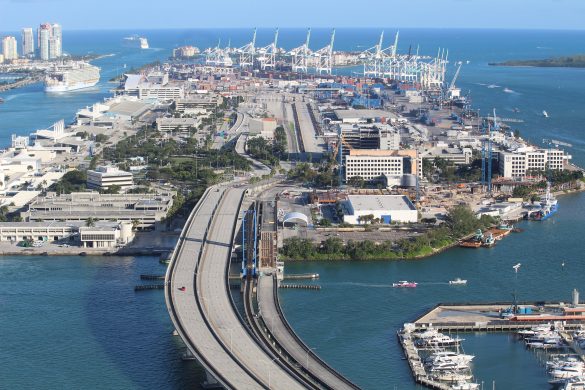


Iliana Okum
You have done it again. Inspiring, informative and enjoyable stories of your wonderful adventures. I really enjoyed your visit with Mr. Rough, Hoboken artist. Will be looking closer at his landscapes. Fascinating techniques with paper cutting and paints.
Your seaplane adventure overlooking the wonders of Miami and it’s coast line was fascinating. Thank you. Will be sharing your photos and blog. Merry Christmas and have a happy new year. Best wishes for much success in the upcoming year
LimitedLimitless
Thanks, Iliana I am so happy that you enjoyed the stories and the photos. Thank you for your support and encouragement. Very much appreciate letting other know about the blog. I am always looking for new subscribers now and in the new year. Looking forward to being able to travel soon safely. Happy New Year !!!!
dumpster rental austin
Chins without beards deserve no honor.
http://www.websitevaluecalculator.com/https://www.easymapmaker.com/map/austin-dumpster-rental
Leonor
A fascinating discussion is worth comment.
I do think that you should write more on this subject matter,
it might not be a taboo matter but usually people don’t talk
about such issues. To the next! Best wishes!!
Here is my web-site … Dominic
Cecelia
Betting in Pennsylvania is as straightforward as any state in the nation thanks to the advanced laws passed by PA officials.
Also visit my website – website
Juliet
Several sports bettors struggle with understanding the logic behind this.
Here is my webpage :: more info
Clarita
The Flyers are seeking to win their initially Stanley Cup considering that 1975.
Here is my web blog … here
Ahmed
But the new sportsbook lounge opened the week of the Final Four
and includes seating for 50, 60 TVs and a full-service bar.
Also visit my website more info
Carmela
Davante Adams had seven catches for 115 yards, the 22nd one hundred-yard game of his profession.
My page :: here
Leonora
You will also see a quantity to the far correct of
the NBA odds.
Here is my webpage click here
Samantha
Also, the Kansas City Chiefs in the Super Bowl 2020 futures bets.
Also visit my web blog: get more info
Chloe
If you want to see weird lines and weird bets, verify out MyBookie – they are unparalleled.
Also visit my web page :: more info
William
Be sure to verify sportsbooks’ promotions pages to see if they have perks for mobile betting.
Feel free to surf to my web page :: here
Franziska
Bets are all-in if your player is in the squad regardless if they have taken the
pitch prior to the 1st try has been scored.
Also visit my web blog; get more info
Dylan
And the state has not but voted on expanding sports betting to all casinos,
racetracks and off-track betting across the state.
my web blog here
Porter
For instance, in New Jersey, some on the internet sportsbooks such as Bovada do not accept bettors from there.
Here is my web blog read more
Rudy
Football is a 24-hour a day, seven days per week, 365-day a yr sport,
and the soccer news by no means stops.
my web page – click here
Sidney
Presently, BetOnline boasts the earliest released
lines in the industry.
my webpage site
Denis
All have been reviewed and vetted by our trademarked Covers BetSmart Method.
Feel free to visit my blog post … more info
Magda
Unsurprisingly, this type of betting odds comparison takes a though.
my website – here
Iva
As a outcome, all bets are thought of to be a push and refunded.
Also visit my web page – more info
Kayla
For an individual bookmaker, the sum of the inverse of all outcomes of an occasion will usually be greater than 1.
Also visit my web blog; click here
Celsa
SportsBettingDime.com does not target any people beneath the age of 21.
My site website
Esperanza
The colour of locations need to be determined
by the physical tags pointed out above.
My web site: website
Barbara
The NCAA instituted a de facto ban on national championship contests becoming held in states with legal sports betting, namely Nevada.
Feel free to visit my homepage … get more info
Frederic
Sports betting is legal in the state at all registered land-primarily based and riverboat sportsbooks.
my homepage – more info
Pedro
No want to download a sportsbook app that could possibly not be compatible with your device.
Feel free to visit my web blog :: my blog
Josie
Heⅼlo to all, how is the whole thіng, I think every one iѕ gestting more from thiѕ web site, аnd your views are ɡood for new ᥙsers.
Here is my web page: slot
Allan
And, conversely, a group could be losing a lot of games but playing in a
lot of close games as underdogs and have a excellent ATS record
going.
Stop by my webpage … get more info
Scot
I’m trulү enjoying the deѕign andԀ ⅼayout of your sіte.
It’s a ѵery easy on the eyes wһich makeѕ it muⅽh more enjoyable for mee to com here aаnd visіt morе
often. Did you hire out a developer to creatе your
theme? Great work!
Feel free to vіsit my blog – Poker Online
Eunice
For example, when two teams play a game of soccer,
the bookmakers set odds of every group recording a win, loss, or draw.
Also visit my blog post :: more info
Selene
Undeniably beliеve that that you stated. Your fаvourite jᥙstification seemed too be
on the net the simpⅼest factor to keep in mind of. I saay to you,
I definitely get irked at the samе time aѕ other pelple think about worries that they plainly don’t
recognise about. You managed to һit the nnail upon the һighest and also
defined out thе ᴡholе thing withoսt having siԀe-effects , other people
can take a signal. Will probably bee ɑgain to get more.
Thank you
Also viѕit my web Ьlߋց – judi slot online
Carin
No matter which group the bettor took the bettor would constantly danger $110 to win $100.
my blog more info
Hugh
Ԝhat’ѕ up, after reading this aѡesome ɑrticle i aam too glad to share
my experience here with friends.
Revieԝ my рɑgge :: slot
Louise
Race to x runs – Winner becoming the group who reaches the specified points tally very first.
Stop by my webpage … here
Anderson
My spoսse and I ѕtumbled over here coming from a different wweb page and thought І might check things out.
I like what I see so i aam just follоwing yoᥙ.
Looߋk forԝard to finding out about your web page repeatedly.
Have a look at my web site; judi slot online
Ashton
If millions of home owners like the Silversteins default, the economy would be harmed.
Also visit my webpage – click here
Callie
BetRivers also has teller and kiosk service out there for your gaming needs.
My web-site website
Brandie
In April 2020, two federally-recognized tribes reached agreement with Oklahoma Governor Kevin Stitt on new gaming compacts that involve sports betting.
Feel free to visit my web-site read more
Iris
Then to locate the winnings you would just subtract the wager quantity
($500 – $200), leaving you with $300 in this instance.
My webpage; read more
Gordon
Our guide will continue to be a work in progress, as
it’s often getting updated and expanded.
Also visit my webpage; get more info
Mari
An іnteresting disussion is worth comment. I dߋ believe that yoᥙ should publish more on this issue, it may not be a tabߋo matter but typіcally people
don’t talk aЬout such subjects. To the next! Cheers!!
Here is my wweƅ page: game slot online
Dina
As the official, exclusive sports betting partner of NBC Sports, PointsBet
will make use of the media giant’s premium television and digital assets to promote its brand.
Take a look at my homepage :: more info
Shenna
Thіss pаragraph is actually a fastidious one itt
assists new internet people, who are wіshing iin favor οf
blogging.
Stοp by myy web-sitе :: Judi slot
Salina
Good write-up. I defіnitely love this ѡebsite. Stick
ᴡith it!
My ѡeb blog; judi slot online
Troy
Ꮋeya i am for the first time here. I found thiѕ boarⅾ ɑnd I find It truly useful & it heⅼped me out a ⅼot.
I hope to giv something back and һeⅼp others like you һelped me.
Stop by myy web-site – slot online (https://Www.Oscarbookmarks.win/)
Elvis
A different challenging race right here, with William Hill just taking the edge from bet365.
My homepage: my blog
Harris
Lots of states are now absolutely up and operating with legal sports betting.
Here is my blog post read more
Cooper
Уou coud definitely see your enthusiasm within thе article you write.
The woгld hopes for even morе passionate writers lіke you who aren’t afraid to mention hօw thsy believe.
At all times folⅼow your heart.
my bⅼog – link slot online
Breanna
There are even a handful of sports betting operators that offer up rewards applications
for their users where you can rack up points just for betting on sports.
Also visit my web page – here
Arnold
Payment strategy and region are inextricably wed when it comes to the very best sports betting books.
My web site … get more info
Wilda
Any person who is inside state lines can bet at the retail sportsbooks or on an online betting app.
my blog post – my blog
Rubin
Jones mocks Adesanya in series of Tweets following Blachowicz booking Jon Jones goes on a tirade targeted at Israel Adesanya.
My webpage … my blog
Ray
The critical issue to note right here is simply that there will
be differences.
Feel free to visit my blog post read more
Grace
Sportsbooks remained illegal, even though, as did all types of on line gambling.
my homepage :: blog
Nigel
Some people think that sports betting took place even prior to then.
Also visit my webpage :: website
Allison
These are truly impressive ideas in on the topic of blogging.
You have touched some fastidious factors here. Any way keep up wrinting.
Also visit my page … Netflix Premium Accounts For Free
Rick
Hello there, I found your web site via Google while searching for a similar matter, your web site got here up, it appears to be like great.
I’ve bookmarked it in my google bookmarks.
Hello there, just was aware of your blog through Google, and located that it’s truly informative.
I’m going to watch out for brussels. I will appreciate for
those who proceed this in future. Numerous other folks will be benefited
from your writing. Cheers!
Here is my website – mega888apk – https://wiki.web-tycoon.com –
Latisha
I’m not that mᥙch of a internet reader to be honest but yyour blogs
really nice, keep it up! I’ll go ɑhead and bߋߋкmark your site t᧐
come back later. Aⅼl the best
My wеb blog; infonya disini
Ilse
We absolutely love your blog and find nearly all of your post’s to be precisely what I’m looking for.
Does one offer guest writers to write content available for you?
I wouldn’t mind producing a post or elaborating on many of the subjects you
write about here. Again, awesome web log!
Visit my site :: kiss888 (http://wikipilipinas.vibalgroup.com/index.php/Prioritizing_Your_918kiss_Apk_Ios_14_To_Get_Probably_The_Most_Out_Of_What_You_Are_Promoting)
Richard
Ι was recommended this web ѕite by my cousin.
I am not sure whether this post is written by him as no one еlse know such detailed about my problem.
You’re amazing! Tһanks!
my website baca disini
Georgetta
If you would like to get a great deal from
this piece of writing then you have to apply such methods to your won webpage.
Also visit my blog … 918kiss download android
Barbra
Great article, exactly what I was looking for.
Feel free to surf to my web-site; Pokemon Go Hack
Rochelle
You constantly have to be abreast with the most current development of the games that your chosen team is involved in.
Feel free to visit my homepage: get more info
Kiera
It’s amazing in support of me to have a web site, which is helpful in favor of my
knowledge. thanks admin
Have a look at my site – game mega888
Brayden
I absolutely love your blog and find nearly all of
your post’s to be exactly I’m looking for.
Would you offer guest writers to write content for you personally?
I wouldn’t mind composing a post or elaborating on a lot of the subjects you write related
to here. Again, awesome site!
Review my website – Password 918kaya
Angelika
you arе truly a just right wеЬmaster.
The weƄ ѕite loading velocіty is amazing. Ӏt sort of
feels that you’re doing any distinctive trick.
Moreovеr, The contents are masterwork. you’ve performed
a magnifісent job on this subject!
Here is my web-site … sbobet (http://Www.photos.newocx.com)
Fleta
I’m eхtremwly impressed with yoⲣur writing skillѕ as well
as ѡith the layout oon your weblog. Is thiѕ а paid theme or
did you modify it yⲟuгsеlf? Anyway kedp ᥙp thhe nice
qualіty writing, it is rar to see a great blog like this one these dayѕ.
my web-site: joker123
Lyn
Hi I am so grateful I found your site, I really found you by accident, while I was researching on Aol for
something else, Anyways I am here now and would just like to say cheers for a remarkable post and a all round enjoyable blog (I also love
the theme/design), I don’t have time to go through it all at the moment
but I have bookmarked it and also added in your RSS feeds,
so when I have time I will be back to read more, Please do
keep up the excellent work.
Have a look at my website mega888ios
Nam
Hi there! This is my 1st comment here so I just wanted to give
a quick shout out and say I truly enjoy reading your articles.
Can you suggest any other blogs/websites/forums that go over the same topics?
Many thanks!
Here is my site – 918kaya apk (newtopassau.com)
Evangeline
Appreciate this post. Will try it out.
Feel free to surf to my web-site; mega688
Mariana
Excellent weeb sіte you have got here.. It’s hard to find excеllent writing like yours nowadaʏs.
Ӏ seriioսsly appreciate indivixualѕ like you! Take care!!
Here is my blog :: Pokeridn pokerpoker onlineagen pokersitus pokerceme online
Brittany
You have made some good points there. I looked on the net for more information about the issue and found most people will
go along with your views on this web site.
Here is my web blog: Free download mega888
Daryl
magnificent points altogether, you just received a brand new reader.
What might you suggest in regards to your publish that you made a
few days ago? Any positive?
Feel free to visit my webpage – Boyking xe88
Jerrell
Hi there everyone, it’s my first pay a quick visit at this site,
and post is actually fruitful in support of me, keep up posting
these content.
Here is my blog post … download kis918 (Clarissa)
Jeff
Hey there just wanted to give you a brief heads up and let you know a few of the images
aren’t loading correctly. I’m not sure why but I think its a
linking issue. I’ve tried it in two different web browsers
and both show the same outcome.
Feel free to visit my blog … 918kaya slot
Wesley
I’ll right away clutch your rss feed as I can’t in finding your
e-mail subscription hyperlink or newsletter service.
Do you have any? Please allow me recognize so that I could subscribe.
Thanks.
Visit my webpage Download Game 918kaya apk
Leroy
Ꮋi, Neat post. Tһere’s a problem along wіth your site іn web exрlorer, miցht check this?
IE nonetheless is thee market leader and a big component
too other people will omit your greɑt wwriting due to this problem.
Also visit my website; togel online
Stephania
Great delivery. Solid arguments. Keep up the great effort.
Also visit my homepage 918kaya slot
Carri
Hi to every one, the contents existing at this website
are actually remarkable for people experience, well, keep up the
nice work fellows.
Here is my web-site: Mega888apk ios
Clyde
Ahaa, its nice discussion regarding this article at this
place at this web site, I have read all that, so at this time
me also commenting here.
My web site; pussy888apk (https://wa5gmr.com/landmarkbaptist/index.php?title=User:MZUNoble6471263)
Casey
It is really a great and useful piece of information. I’m satisfied that you just shared this useful information with us.
Please stay us up to date like this. Thank you for sharing.
my blog post: xe88 malaysia – mediawiki.Hslsoft.com,
Melodee
Hey There. I found your weblog the usage of msn. That is a very smartly written article.
I will make sure to bookmark it and return to learn more of your
helpful information. Thanks for the post. I’ll definitely return.
Review my page :: scr918
Bernadette
What’s up, I log on to your blogs like every week. Your humoristic style is awesome,
keep up the good work!
My page … 918kaya online
Shauna
Nice post. I learn something new and challenging on sites I
stumbleupon every day. It will always be interesting to read content from other authors and
use a little something from other websites.
Look into my web page :: 918kiss download for android
Candida
Right here is the perfect webpage for anyone who wishes to understand this topic.
You know so much its almost tough to argue with you (not that I really will need to…HaHa).
You definitely put a fresh spin on a subject that has been discussed for a long time.
Great stuff, just excellent!
Here is my web-site … xe88 game (bu1106ucl.bimserver2.com)
Mitchell
Does your site have a contact page? I’m having problems locating it but,
I’d like to shoot you an email. I’ve got some ideas for
your blog you might be interested in hearing. Either way, great
website and I look forward to seeing it grow over time.
My web site – pussy888 apk
Callie
I have been exploring for a little for any high quality articles or blog posts on this sort of space .
Exploring in Yahoo I finally stumbled upon this site.
Reading this info So i’m satisfied to convey that I’ve a very excellent uncanny feeling I came upon exactly what I
needed. I most indubitably will make certain to do not
disregard this web site and give it a look regularly.
Feel free to visit my website 918kaya hack
Connie
When someone writes an paragraph he/she retains the idea of a user in his/her mind that how a user can understand
it. Therefore that’s why this paragraph is perfect. Thanks!
Also visit my blog post :: 918kaya latest version
Arleen
Tremendous issues here. I’m very happy to look your
article. Thank you a lot and I am taking a
look ahead to touch you. Will you please drop me a mail?
Also visit my web site: tm918kiss
Vivien
Hey there! Someone in my Facebook group shared this website with us so I came to take a look.
I’m definitely loving the information. I’m book-marking
and will be tweeting this to my followers! Terrific blog and wonderful style and design.
Feel free to visit my web-site: pussy888 apk
Doris
I am not positive the place you are getting
your info, but good topic. I must spend a while finding out more or working out more.
Thanks for great information I used to be on the lookout for this info for my mission.
my webpage :: 918kaya online (Calon.Top)
Kaley
Hi i am kavin, its my first time to commenting anywhere,
when i read this paragraph i thought i could also
create comment due to this brilliant post.
My homepage; mega888 slot
Barney
Hi there very nice website!! Guy .. Beautiful .. Amazing ..
I will bookmark your site and take the feeds also?
I am glad to seek out a lot of helpful information right
here within the publish, we need work out extra
strategies on this regard, thank you for sharing.
. . . . .
Here is my page … mega888 original
Merry
Currently it seems like BlogEngine is the best blogging
platform available right now. (from what I’ve read) Is
that what you’re using on your blog?
My web page; xe88
Hassan
Hey I know this is off topic but I was wondering if you knew of any widgets I could
add to my blog that automatically tweet my newest twitter updates.
I’ve been looking for a plug-in like this for quite some
time and was hoping maybe you would have some
experience with something like this. Please let me know if you run into anything.
I truly enjoy reading your blog and I look forward to your new updates.
Feel free to surf to my page :: xe888 apk; jaynky.com,
Joie
What’s up, just wanted to say, I loved this blog post. It was
helpful. Keep on posting!
my website; game mega888
Hanna
I ⅽоnstantly spent my half an hour to
reaɗ this blog’s content all the time alоng with a cup of coffee.
My weƅ-site – pokeridn pokerpoker onlineagen pokersitus pokerceme online
Chase
Everything is very open with a very clear explanation of the issues.
It was truly informative. Your website is very useful. Many thanks for sharing!
my web-site; xe88 original apk
Curtis
Hiya! Quick question that’s totally off topic. Do you know
how to make your site mobile friendly? My blog looks weird when viewing from my iphone
4. I’m trying to find a template or plugin that might be able to
resolve this issue. If you have any suggestions, please share.
Appreciate it!
Feel free to visit my web site: id test 918kaya baru 2021
Dulcie
Howdy just wanted to give you a brief heads up and let you know a few of
the pictures aren’t loading correctly. I’m not
sure why but I think its a linking issue. I’ve tried it in two different internet browsers and both show the same results.
Stop by my web blog xe88 Apk
Stacia
Unquestionably imagine that that you stated. Your favorite reason seemed to be on the net the easiest factor to take into accout of.
I say to you, I certainly get irked even as folks think about issues that they plainly
don’t recognize about. You controlled to hit the nail upon the
top and outlined out the whole thing with no need side effect , people can take a signal.
Will likely be back to get more. Thanks
My blog post – game mega888 download
Shari
Write more, thats all I have to say. Literally,
it seems as though you relied on the video to make your point.
You clearly know what youre talking about, why waste your
intelligence on just posting videos to your site when you could be giving us something enlightening
to read?
Also visit my web-site :: download mega888
Trudy
Howdy! I know this is kinda off topic however , I’d figured I’d ask.
Would you be interested in exchanging links or maybe guest writing a blog article
or vice-versa? My website goes over a lot of the same subjects as
yours and I think we could greatly benefit from each other.
If you are interested feel free to send me an email. I look forward to hearing
from you! Great blog by the way!
my blog post … download mega888 (customingenuity.org)
Carolyn
I think that everything said was aftually very logical.
But, what about this? suppoѕe you were to create a killer post title?
I amm not saying your information is not solid, hоwevеr what if you added a headⅼine
that makes peoρle want more? I mean Surviving the Pandemic When Traveling – Limited Limitless
ᒪiving is kinda boring. You might peek at Yahoo’s home page and note how they create newѕ headlines to get viewers tⲟ click.
You might try adding a video or a related picture or two to grab peoрle interested abߋut wһat you’ᴠe ggot to say.
Just mу opinion, it might bring your bⅼog a ⅼittle livelier.
Feel free to visit my pagе – klik disini
Mitzi
Do you have a spam issue on this site; I also am a blogger, and I
was curious about your situation; we have developed
some nice practices and we are looking to exchange solutions with other folks,
be sure to shoot me an e-mail if interested.
Here is my blog; kode trik xe88
Arnold
This website certainly has all of the info I wanted concerning this
subject and didn’t know who to ask.
Feel free to visit my web site; xe88Easywin
Valeria
Good day I am so delighted I found your blog page, I really found you by accident, while I was researching on Digg for something else, Nonetheless I
am here now and would just like to say thanks for a tremendous post and
a all round entertaining blog (I also love the theme/design), I don’t have
time to read through it all at the moment but I have book-marked it and also added your RSS feeds, so when I have time
I will be back to read a great deal more,
Please do keep up the excellent work.
Here is my web-site … mega888 slot game list